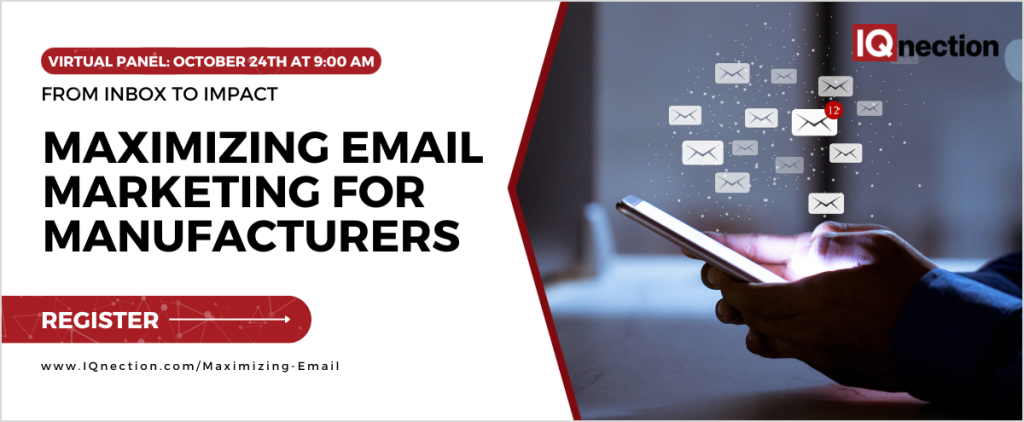Email marketing remains one of the most powerful and direct ways to connect with your audience. Particularly for sales outreach, email can work wonders when crafted correctly. Think of your email marketing strategy as a recipe – with the right ingredients and method, you’ll cook up success.
Below, we share some of the most effective email marketing “recipes” and workflows for sales outreach. These are designed to help businesses maximize their email marketing efforts and, in turn, drive sales and growth.
10 Email Recipes for Sales Outreach
Follow the “recipes” below to whip up sales emails that captivate, resonate, and motivate your prospects to engage and act.
The Introduction Email: Your First Impression
Ingredients:
- Welcoming subject line, e.g., Welcome to [Your Company Name]! Discover What Awaits.
- Personalized greeting
- Brief introduction
- Clear value proposition
- A soft call-to-action (CTA)
Method:
Start with an intriguing subject line to compel recipients to open the email. Then, use a personalized greeting based on the lead’s name or company. Briefly introduce your business and highlight your unique selling proposition (USP). End with a soft CTA like “Let’s discuss how we can help” or “Would you like to learn more?”
The Content Share: Establishing Credibility
Ingredients:
- Share-focused subject line, e.g., Unlock Insights: Our Latest [e.g., eBook/Report] Inside
- Brief explanation of the content’s value
- A link or attachment of the valuable content
- A CTA encouraging feedback or discussion
Method:
Share relevant and valuable content like e-books, case studies, or industry reports. This showcases your expertise and provides value. Encourage the recipient to give feedback or ask questions, fostering a two-way conversation.
The Testimonial Nudge: Building Trust
Ingredients:
- Success-oriented subject line, e.g., Success Story: See How We Helped Others Like You.
- A real testimonial or success story
- Imagery (if possible)
- A CTA urging the prospect to work with you to experience similar success
Method:
Sharing genuine testimonials and stories can establish trust and show potential clients the success others have achieved. Ensure the testimonial or success story is relevant to the recipient’s needs or industry.
The Limited-Time Offer: Creating Urgency
Ingredients:
- Time-sensitive subject line, e.g., Tick Tock: Exclusive Offer Ends Soon.
- Details of the offer
- Clear end date and time for the offer
- A strong, urgency-driven CTA
Method:
When presenting a special promotion or limited-time offer, conveying its time-sensitive nature is essential. Highlighting this urgency can motivate hesitant prospects to make a decisive move.
The Follow-Up Reminder: Nudging Toward Action
Ingredients:
- A subject line reminding of the previous email, e.g., In Case You Missed It
- A brief recap of the last communication or offer
- Reiteration of value
- A strong CTA urging action
Method:
Send a polite follow-up if you haven’t heard back after your initial email. Recap the main points of your previous email, remind them of the value you offer, and encourage a response.
The Re-Engagement Email: Reigniting the Connection
Ingredients:
- We miss you-focused subject line, e.g., We’ve Missed You: A Special Offer Inside
- Personalized greeting
- Brief mention of their past engagement or activity
- Exclusive offer or content piece
- CTA urging them to re-engage
Method:
Open with a personalized greeting, referencing the last time they engaged with your content. Present your exclusive offer or content piece in a visually appealing manner. End with a compelling CTA, perhaps a button that says, “Claim your offer” or “Discover what’s new.”
The Feedback Request Email: Understanding Your Audience’s Needs
Ingredients:
- Feedback-oriented subject line, e.g., Help Us Serve You Better.
- Personalized greeting
- Explanation of the importance of their feedback
- Link to a survey or feedback form
- Optional incentive for completion
Method:
Greet the recipient and emphasize the value of their feedback. Present the link or method for providing feedback. If offering an incentive, such as a discount, ensure its highlighted prominently. Conclude with gratitude, thanking them in advance for their time and opinion.
The Post-Purchase Thank You Email: Fostering Goodwill and Continued Engagement
Ingredients:
- Thank you-themed subject line, e.g., Thank You for Your Purchase.
- Personalized greeting
- Summary or image of the purchased product/service
- Additional resources or offers
- A CTA urging them to explore more or get support if needed.
Method:
Begin with a warm thank you and a brief overview or image of their purchase. Introduce the additional resources or offers, positioning them to enhance their recent purchase. Provide links or buttons for easy access and sign off with an offer of support or assistance.
The Upsell/Cross-sell Email: Boosting Sales
Ingredients:
- Product- or service-focused subject line, e.g., Enhance Your [Product/Service Name] With This
- Personalized greeting
- Introduction to complementary products or services
- Brief benefits or reasons to consider the upsell/cross-sell
- CTA urging them to check out the recommendations
Method:
Open with a greeting, then introduce the complementary products or services. Use persuasive language and visuals to highlight the benefits. End with a compelling CTA like “Discover more.”
The Abandoned Cart Reminder: Recovering Potential Sales
Ingredients:
- Cart reminder subject line, e.g., Still Considering? We’re Here to Help.
- Personalized greeting
- Images and descriptions of the abandoned items
- A direct link to their cart
- A CTA urging completion of the purchase, e.g., Complete your purchase now.
Method:
Start with a friendly reminder about their unfinished shopping session. Display the items left in the cart with clear images and brief descriptions. Offer a direct link to the cart for easy checkout. Conclude with a sense of urgency, encouraging them to finalize their purchase.
Like the steps of a gourmet recipe, each email caters to specific moments in a customer’s journey, ensuring they savor every interaction and feel the urge to return for seconds.

Email Workflows for Sales Outreach
With your feast of freshly baked email recipes, you’re now ready to serve them up! Consider these email workflows to amplify your sales outreach efforts.
Lead Nurturing Workflow
Trigger: A user signs up for your newsletter or downloads content.
Email 1: Introduction email, welcoming them and providing an overview of what to expect.
Email 2: Content share to establish credibility.
Email 3: Testimonial nudge to build trust.
Email 4: Limited-time offer or promotion to create urgency.
Email 5: Follow-up reminder if there’s no engagement.
Re-engagement Workflow
Trigger: A contact hasn’t opened your emails in the last six months.
Email 1: “We miss you” message with a special offer or exclusive content.
Email 2: A survey or feedback request to understand why they haven’t engaged.
Email 3: Highlight recent company updates or success stories they might have missed.
Post-Purchase Workflow
Trigger: A lead makes a purchase.
Email 1: Thank you note, including a summary of the purchase and what to expect next.
Email 2: Tips and tricks related to the product/service they purchased.
Email 3: Upsell or cross-sell email highlighting products/services they might be interested in.
Abandoned Cart Workflow
Trigger: A user adds products to their cart but doesn’t complete the purchase.
Email 1: Reminder of the abandoned cart items with a direct link to the checkout.
Email 2: Offer a limited-time discount or bonus to incentivize purchase.
Email 3: Showcase testimonials or reviews of the products in the cart. By incorporating these workflows into your email marketing strategy, you’re creating structured pathways to guide leads from one stage of the sales funnel to the next. Each workflow is triggered by specific actions (or inactions) and aims to guide recipients toward desired outcomes, optimizing the chances of conversion.
Cooking Up Success
When launching your email marketing campaign, follow these essential guidelines for a successful result:
- Automate: Harnessing email automation tools can streamline these recipes. Set triggers based on recipient actions. For instance, if a lead opens your Introduction email but doesn’t respond, the system can automatically send them the Content Share after a few days.
- Segment and Personalize: Much like how not every dish suits every palate, not every email will resonate with every recipient. Segment your email list based on criteria such as industry, level of engagement, or their stage in the sales funnel. Then, personalize the email content accordingly. You can significantly improve engagement and conversion rates by ensuring that your emails are tailored to each segment’s unique interests and needs.
- Analyze: Use email analytics to see which “recipes” perform best. Track open rates, click-through rates, and conversion rates. Tweak your strategies based on data for continuous improvement. This iterative approach ensures your email campaigns are optimized for the best results.
An effective email marketing strategy goes beyond crafting individual emails—it encompasses a comprehensive system that seamlessly moves leads through the sales funnel.
Ready to turn your sales outreach into a delicious success? Contact our team for an email marketing strategy to amplify your reach and convert recipients into customers.










